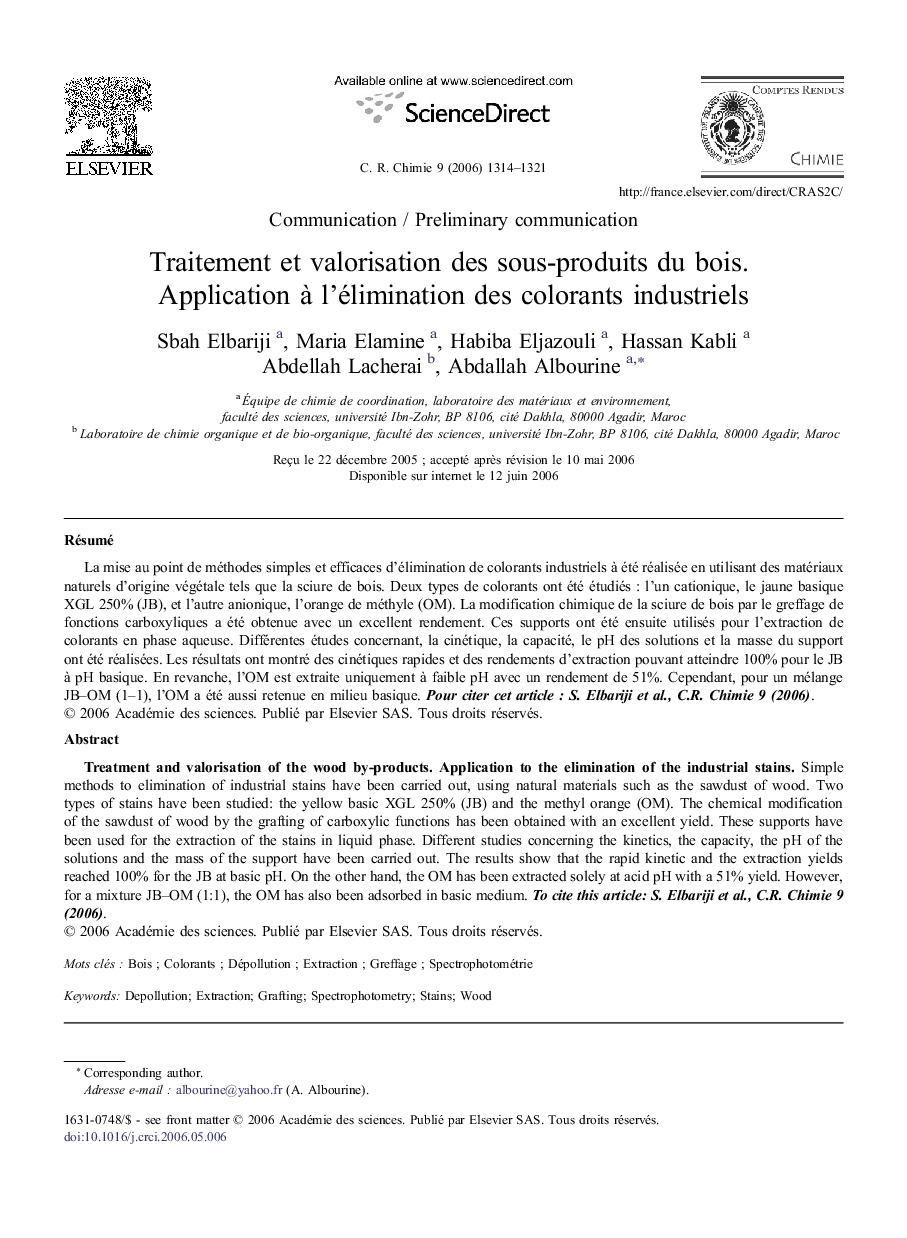| Article ID | Journal | Published Year | Pages | File Type |
|---|---|---|---|---|
| 171509 | Comptes Rendus Chimie | 2006 | 8 Pages |
RésuméLa mise au point de méthodes simples et efficaces d'élimination de colorants industriels à été réalisée en utilisant des matériaux naturels d'origine végétale tels que la sciure de bois. Deux types de colorants ont été étudiés : l'un cationique, le jaune basique XGL 250% (JB), et l'autre anionique, l'orange de méthyle (OM). La modification chimique de la sciure de bois par le greffage de fonctions carboxyliques a été obtenue avec un excellent rendement. Ces supports ont été ensuite utilisés pour l'extraction de colorants en phase aqueuse. Différentes études concernant, la cinétique, la capacité, le pH des solutions et la masse du support ont été réalisées. Les résultats ont montré des cinétiques rapides et des rendements d'extraction pouvant atteindre 100% pour le JB à pH basique. En revanche, l'OM est extraite uniquement à faible pH avec un rendement de 51%. Cependant, pour un mélange JB–OM (1–1), l'OM a été aussi retenue en milieu basique. Pour citer cet article : S. Elbariji et al., C.R. Chimie 9 (2006).
Treatment and valorisation of the wood by-products. Application to the elimination of the industrial stains. Simple methods to elimination of industrial stains have been carried out, using natural materials such as the sawdust of wood. Two types of stains have been studied: the yellow basic XGL 250% (JB) and the methyl orange (OM). The chemical modification of the sawdust of wood by the grafting of carboxylic functions has been obtained with an excellent yield. These supports have been used for the extraction of the stains in liquid phase. Different studies concerning the kinetics, the capacity, the pH of the solutions and the mass of the support have been carried out. The results show that the rapid kinetic and the extraction yields reached 100% for the JB at basic pH. On the other hand, the OM has been extracted solely at acid pH with a 51% yield. However, for a mixture JB–OM (1:1), the OM has also been adsorbed in basic medium. To cite this article: S. Elbariji et al., C.R. Chimie 9 (2006).
